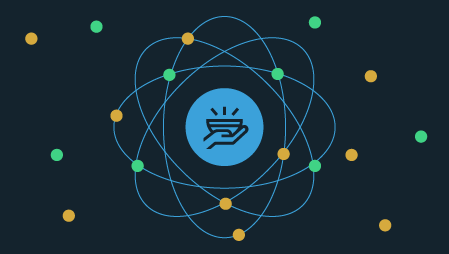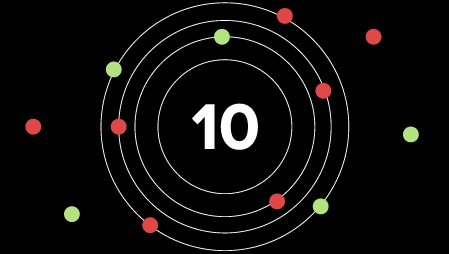Top 9 Logistics Industry Trends & Innovations In 2021
In the last couple of years, increasing technological advances have been causing giant waves in various industries, and the logistics industry is not an exception. In fact, this sector has probably benefited the most by implementing new logistics trends.
Did you know? As per the recent development stat, by 2023, the logistics market will expand to over $12 trillion. As a result, logistics software development companies are moving forward with innovative strategies to respond to these rapidly changing logistics trends in 2021.
Digital Logistics Market
With the pandemic, the logistics industry is being put under tremendous pressure to deliver daily essential healthcare products to people worldwide. And, there have been massive developments for the logistics industry in areas such as AI, data analytics, robotics, and IoT, to name a few.
These technologies have developed faster than ever before. But, there are new expectations and standards associated with these innovations, forcing logistics companies to either adapt or retreat.
So, this article will discuss some of the top emerging trends in the logistics industry that you need to know about in 2021. Let’s dig in.
What are the Top Logistics Industry Trends For 2021?
Here are the top trends and innovations in the logistics industry that are prevailing in 2021 and beyond. Take an insight look at them:
- Internet of Things (IoT)
IoT
IoT is the connection to physical devices that monitors and transfers data through the Internet without any human intervention. You have most probably used this technology in smartphones, fitness bands, and even in smart homes.
But, the logistics industry has turned this superior technology into an asset for better operational efficiency. IoT in logistics is essential for the supply chain mechanism, and it also improves inventory management efficiency.
By integrating the Internet of Things into the logistics industry, you can track and record every piece of information. Let’s take an example here – SenseAware, a subsidiary of FedEx that provides sensor-based logistics tracking systems.
In addition to the general location and distance data, SenseAware provides insight into information such as heat, temperature, humidity, pressure, and even weather-based alerts. It operates in 20 countries to offer IoT-based logistics software solutions.
- Artificial Intelligence
Artificial Intelligence
In recent years, the logistics industry has started to integrate AI solutions into its operations, including intelligent transportation and route planning – but this is only the beginning.
According to a survey, using Artificial Intelligence in logistics can increase companies’ profits by more than 50% annually. Some of the large companies increase investment in AI technologies in order to save money and time in the future.
AI has already affected the transport sector in the last decade. The use of AI helps improve the functionality of the operation, detect potential problems, and propose decisions.
AI algorithms with ML support organizations to become proactive in dealing with demand fluctuations. For example, AI-based forecasting solutions let managers plan supply chain processes and find ways to reduce operating costs.
- Robotics
Robotics
There is no doubt that warehouse operations have undergone a significant change in recent years. It is one of the logistics technology trends that is likely to continue in the coming years. Warehouse robotics is one of the fantastic innovations in logistics.
Did you know? The global robotics market will touch $210 billion by the year 2025, at a compound annual rate of 26%. Industrial and logistics applications mostly dominate the robot market.
Robotics is not a new concept, but it will be a significant factor in the progress of the logistics industry. Modern robots are more intelligent, with the advent of cognitive approaches to mechanical engineering and machine learning algorithms.
Boston Dynamics’ mobile warehouse robot, Handle, is one such excellent example of warehouse robotics. The company has developed a fully autonomous robot with a small footprint, a long reach, and a vision system to unload trucks, build pallets, and transfer boxes via any facility.
- Last Mile Delivery
The World Economic Forum has anticipated that by 2030, 60% of the Earth’s population will live in cities. This number will increase to 70% by 2050.
With increasing eCommerce requirements, this expansion of urbanization means that a significant logistics industry trend will be the last mile delivery initiative. Last Mile delivery costs accounted for more than half of the total logistics costs of companies.
Top 9 Logistics Industry Trends & Innovations In 2021
Apart from reaching Last Mile customers, organizations are leveraging advanced technology tools to provide customers with real-time updates and even non-delivery reasons on their orders.
The real-time tracking of orders will inevitably provide a sense of assurance, and also promote user satisfaction and retention.
In 2021, we are experiencing enhanced order tracking services and last-mile delivery, with companies continuously going the extra mile in order to provide users with a seamless shipping experience.
5. Blockchain.
Blockchain has been one of the fastest growing industry-rebuilding global logistics trends over the last couple of years, and its rise does not show any signs of stopping. Before 2022, worldwide spending on blockchain solutions is expected to climb to $11.7 billion.
The blockchain provides security through an indisputable decentralized ledger system, and it also tackles traceability and related challenges. This brings transparency of transactions throughout the logistics process.
In addition, smart contracts based on blockchain technology allow for quick approval and clearance by reducing processing time at checkpoints.
- Cloud Computing
Top 9 Logistics Industry Trends & Innovations In 2021
This is a virtualized pool of computing resources that facilitates data storage, networking, retrieval, and analytics over the Internet. When you apply a cloud computing approach to logistics software, activities such as order management and delivery become efficient.
Cloud computing is a part of the thriving global digital logistics market. The global digital logistics market is set to grow by 21.7% annually between 2020 and 2025.
As the logistics industry grows more digital in the coming years, cloud-based software-as-a-service (SaaS) solutions will become an integral part of logistics companies’ IT infrastructure.
Cloud-based logistics solutions reduce communication barriers and enhance data security in order to enable secure remote collaboration between manufacturers and logistics providers.
- Warehouse Automation
Warehouse Automation
This is not a new concept; we have already seen AGVs (Automatic Guided Vehicles) helping the industrial revolution. Due to modern logistics needs and eCommerce markets, the vast growth of demand has made most warehouses sustain with AGVs.
Many eCommerce software solutions are around the corner, and automated vehicles are one of them. The automated vehicle will reduce delivery costs by up to 40% for on-demand businesses. This is why since 2014, warehouse automation manufacturers have seen a 15% increase in revenue.
The next stage of development in warehouse automation will be a more robust integration of IoT-based technologies. According to McKinsey, investment in warehouse automation will grow at a rate of 3 – 5% by 2025.
Moreover, companies will require more reliable embedded software to develop data transformation on the fly for logistic pickup and delivery.
- Data Analytics
Data Analytics provides usable insights to improve warehouse productivity, performance management, and optimum utilization of logistic resources.
And, the information derived from monitoring conditions and weather helps optimize routes and delivery planning. Analysis of market data supports further optimization of supplier pricing, inventory levels, and the creation of risk management reports.
Data analytics is not only important for intelligent decision-making, but it also improves performance, and here’s proof. According to a survey, 71% of shippers and third-party logistics companies believe that big data enhances quality and performance.
In addition, advanced analytics provides insights that help identify anomalies and provide predictive maintenance solutions.
- Elastic Logistics
In the logistics industry, the response to unpredictable consumer demands can make or break a supply chain strategy. As a result, 2021 supply chains need to be prepared to expand or shrink their capacity based on the constantly changing demand from industry variables.
This practice is termed elastic logistics, and it is one of the most critical logistics trends in 2021. Elastic logistics enables companies to handle supply chain operations with greater efficiency during periods of demand fluctuations.
It also helps to upscale or downscale supply chain operations as required, according to market demand.
Elastic logistics thus tackles the challenges faced by eCommerce companies, including the reduced use of ships, and restrictions on warehousing and overstocking.
Summing Up
Today, the logistics industry looks completely different than it did several years ago. The logistics trends mentioned above will continue to affect the logistics sector well into the future.
However, new tech trends shaping the logistics industry need to be integrated with existing solutions. Businesses can now create a next-generation stack that leverages these technology investments.
So, if you want to integrate these trends into your logistics business, reach out to one of the top logistics software development companies in India. They will surely assist you with implementing these emerging trends into your business.
And, this will lead you to gain a competitive advantage in the market. Good Luck!





